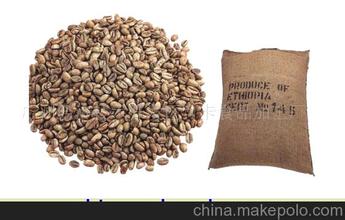Coffee bean red wine treatment-method of pressing kettle
Coffee beans red wine treatment method-French press pot use method
Honey treatment is more stable than dry treatment but not as good as washing treatment. This method of processing coffee beans by honey treatment has recently been sought after by coffee lovers for its sweet taste, Crema richness and suitability for extracting Espresso, the base of Italian coffee. The advantages are that the coffee bean flavor can be well restored, the coffee sweetness is stronger, and the red wine flavor is prominent. The disadvantage is that coffee beans are very susceptible to contamination and mold during the drying process after the exocarp of coffee berries is removed
The semi-washing method, also known as the "honey treatment method", is a compromise between the drying method and the washing method, eliminating the washing method of fermenting the coffee cherries. Harvesting → Storage tank (removal of impurities and unripe beans) → Pulp remover (removal of pulp and impurities) → Washing tank (selection of light and hard beans) → Solarization field (or dryer) → Shelling machine (removal of endocarp)→ Classification (electronic bean separator or manual selection, sieve, etc.)→ Export
Acetic fermentation: cleaner, livelier acids, brighter acids, citric acid
Lactic fermentation method: taste more round, cleaner than acetic acid fermentation method, higher body, malic acid/tartaric acid
Until now, processing plants have been operated manually, handed down from generation to generation, such as biting and feeling the fermentation of coffee beans. This fermentation process is uncontrollable and variable.
Controlled fermentation monitors the degree of fermentation by controlling the pH. To achieve predictable results and consistent production from batch to batch.
Origin information: Cundinamarca Province, eastern foot of the Andes Mountains in Colombia. The planting altitude is 1800-2000 meters, the average temperature is 16° C, the green bean density is high, and the baking requirements are also high.
Colombia farmers carefully harvest coffee cherries and select coffee red berries to ensure that less than 2% of the coffee cherries are unripe, less than 3% are defective, and less than 5% are floating.
The selected cherries are placed by the farmer in a special container, which should have a device similar to a red wine fermentation stopper or a single vent valve. In this way, carbon dioxide can escape through the device to control the concentration of air in the container. At this time, the coffee cherries in the container undergo acetic acid fermentation, and the beans produced by this reaction have a relatively bright flavor, clean, and lemony acidity.
Usually, processors inject carbon dioxide into the container to prevent oxidation to volatile acids, a process known as lactic acid fermentation, which produces malic acid and stearic acid. The stearic acid is relatively stable, so lactic acid fermentation produces beans with a richer sour taste and a cheesy, nutty, creamy taste.

Important Notice :
前街咖啡 FrontStreet Coffee has moved to new addredd:
FrontStreet Coffee Address: 315,Donghua East Road,GuangZhou
Tel:020 38364473
- Prev

The processing method of Danqi Meng Coffee introduction to the Environmental production area of Cooperative planting Manor
Beans taste different according to the region where they grow. The factors that affect the taste are the variety of coffee trees, the soil properties of growth, the climate and altitude of the cultivation garden, the care of picking results, and the process of bean treatment, etc. These elements vary from region to region, while bakers and integrated manufacturers look for the characteristics of each region, so that the comprehensive products have their own unique typical flavor. You can try to chase.
- Next

The best time for roasting coffee beans. Roasting degree of concentrated roasted coffee beans
The best time for roasting coffee beans is concentrated roasting coffee beans roasting process: after roasting at more than 200 degrees Celsius, the water begins to evaporate, the volume will expand, the weight will be reduced, the deeper the baking, the more weight loss. Another phenomenon is that during baking, coffee beans release carbon dioxide, and the roasted cooked beans will continue to exhaust within 30 days.
Related
- Guji coffee producing area of Guji, Ethiopia: Humbela, Shakiso, Wulaga
- What is the most expensive variety of Qiloso in BOP multi-variety group?
- How to store the coffee beans bought home?
- Why are Yemeni coffee beans so rare now?
- Ethiopian Sidamo all Red Fruit Sun Sun Santa Vini Coffee beans
- SOE is mostly sour? What does it mean? Is it a single bean? what's the difference between it and Italian blending?
- Is Italian coffee beans suitable for making hand-brewed coffee?
- How to choose coffee beans when making cold coffee? What kind of coffee beans are suitable for making cold coffee?
- Just entered the pit to make coffee, what kind of coffee beans should be chosen?
- Can only Japan buy real Blue Mountain Coffee? What are authentic Jamaican Blue Mountain coffee beans?

